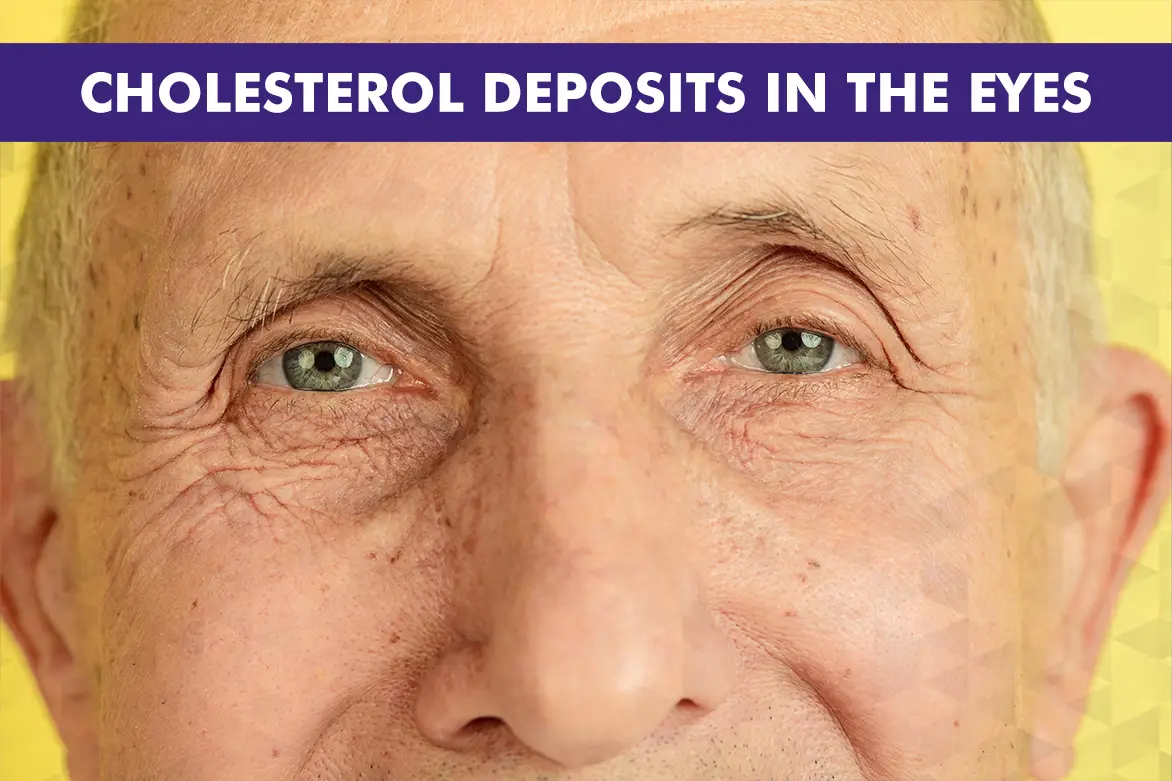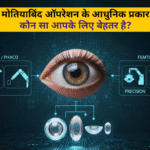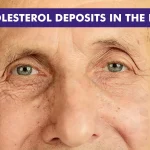Summary: Cholesterol deposits around the eyes indicate a possible lipid imbalance. Early detection, balanced diet, and timely cholesterol treatment help prevent recurrence while promoting overall cardiovascular and eye health.
|
Key Takeaways:
|
Cholesterol is characterised by yellowish cholesterol deposits around the eyes, commonly on the eyelids. These deposits are soft, painless, and non-cancerous but can be a cosmetic concern for many individuals. While Cholesterol does not pose health risks, it can sometimes indicate underlying lipid disorders. Effective Cholesterol treatment involves identifying the cause, addressing lipid imbalances, and removing the lesions when necessary.
Although Cholesterol deposits are benign, their visible nature can be distressing. It can affect an individual’s self-confidence, prompting many to seek Cholesterol removal options. Understanding the causes of Cholesterol, exploring treatment methods, and implementing preventive measures can help manage this condition effectively. It is also essential to differentiate Cholesterol from other skin conditions that may appear similar, such as syringomas or milia, which require different treatments.
Causes of Cholesterol
Cholesterol is primarily associated with cholesterol metabolism disorders, though it can occur even in individuals with normal cholesterol levels. Some common causes of Cholesterol include:
- High cholesterol and triglycerides – Excess lipids in the blood contribute to fatty deposits in the skin, leading to the formation of Cholesterol.
- Genetics—Some people are predisposed to developing Cholesterol due to hereditary factors. If a family member has high cholesterol, the likelihood of developing it is increased.
- Liver disease – Conditions such as cirrhosis and primary biliary cholangitis can lead to lipid metabolism issues, resulting in cholesterol deposits in the skin.
- Diabetes – Uncontrolled blood sugar levels can contribute to cholesterol imbalance, increasing the risk of Cholesterol development.
- Obesity and poor diet – High-fat diets, excessive consumption of processed foods, and obesity may contribute to lipid imbalances and Cholesterol formation.
Addressing these underlying causes is essential to prevent recurrence after eye cholesterol spot treatment. Lifestyle modifications, such as dietary adjustments and weight management, can help regulate cholesterol levels and reduce the risk of Cholesterol deposits.
Symptoms of Cholesterol Deposits
The main symptom of Cholesterol is the appearance of yellowish plaques near the eyes. Other characteristics include:
- Painless growths – The lesions are soft and typically do not cause discomfort.
- Symmetrical distribution – Cholesterol often appears on both eyelids, affecting the medial canthus (the inner corner of the eye).
- Slow progression – The condition develops gradually over time and may increase in size if left untreated.
- Persistent nature – Once formed, Cholesterol does not disappear independently and may require Cholesterol removal for aesthetic reasons.
Although Cholesterol does not impact vision or eye function, it may cause aesthetic concerns, leading individuals to seek professional Cholesterol treatment.
Diagnosis
Cholesterol is usually diagnosed through a physical examination. However, additional tests may be recommended to assess lipid levels and rule out underlying conditions:
- Lipid panel blood test – Measures cholesterol and triglyceride levels to determine if an imbalance is present.
- Liver function tests – Evaluate liver health in cases where metabolic disorders are suspected.
- Diabetes screening – Determines if high blood sugar contributes to cholesterol imbalance and Cholesterol formation.
A proper diagnosis is crucial to ensure that Cholesterol treatment removes the deposits and addresses potential health risks. A healthcare professional may also examine other body areas for cholesterol-related conditions, such as tendinous xanthomas, which appear on joints.
Medical Treatments
Several medical procedures are available for eye cholesterol spot treatment, each with varying effectiveness and recovery times. Common options include:
- Laser therapy – Uses high-energy laser beams to break down cholesterol deposits. It is a precise method with minimal scarring and requires multiple sessions.
- Cryotherapy – Freezes the plaques using liquid nitrogen, causing them to gradually fall off. This technique is effective but may result in temporary redness or swelling.
- Chemical peels: Trichloroacetic acid (TCA) dissolves the deposits over time. Chemical peels require careful application to avoid damage to surrounding skin.
- Surgical excision – A minor surgical procedure that physically removes the lesions. This is usually recommended for larger Cholesterol patches but may leave a small scar.
- Radiofrequency ablation – Uses controlled heat to eliminate Cholesterol while minimising damage to the surrounding skin.
Each cholesterol removal method has advantages and limitations, so it is important to consult with a specialist before deciding on treatment. Some treatments, such as laser therapy, may require multiple sessions to achieve the desired results, while others, such as surgical excision, provide immediate removal.
Home Remedies for Cholesterol
Some eye cholesterol spot treatment methods can be attempted at home for those who prefer non-invasive options. While these remedies may not altogether remove Cholesterol, they can help manage lipid levels and reduce lesion size:
- Garlic application—Crushed garlic may have lipid-lowering effects and could be applied to affected areas. However, if not appropriately used, garlic may cause skin irritation.
- Apple cider vinegar is known for its potential cholesterol-lowering properties when consumed regularly. It may also have a mild exfoliating effect when applied topically.
- Almond oil—Rich in vitamin E, it may improve skin health and reduce the appearance of lesions with prolonged use.
- Dietary modifications – A heart-healthy diet with reduced saturated fats and Cholesterol may prevent progression and recurrence.
These remedies should be used cautiously, as some may cause skin irritation. If symptoms worsen, professional Cholesterol treatment should be considered.
Cholesterol Prevention
While Cholesterol removal can eliminate existing lesions, preventing recurrence requires lifestyle adjustments:
- Maintain healthy cholesterol levels through a balanced diet and medication if necessary.
- Engage in regular physical activity to promote heart health and regulate lipid levels.
- Avoid smoking and excessive alcohol consumption, as these contribute to lipid imbalances.
- Schedule regular checkups to monitor Cholesterol and metabolic health.
- Manage underlying conditions such as diabetes and liver disease to reduce the likelihood of recurrence.
Long-term management is essential to reduce the likelihood of new cholesterol deposits forming around the eyes.
Conclusion
Cholesterol is a cosmetic condition that can be effectively treated with medical procedures or managed through home remedies and lifestyle changes. Consulting a specialist ensures the most appropriate treatment approach based on individual needs.
Take control of your eye health. Schedule a consultation. Book an Eye Health Checkup!
FAQs
Signs of high cholesterol in the eyes include yellowish bumps or patches on the eyelids and around the eyes. These deposits may appear soft and raised. Other potential signs include blurry vision and changes in peripheral vision.
Treatment options include laser therapy or surgical removal for larger deposits. Consulting an eye specialist is essential for an appropriate treatment plan.
High cholesterol can lead to conditions that affect tear production, contributing to dry eyes. Maintaining healthy cholesterol levels supports overall eye health.
High cholesterol may contribute to increased eye pressure, potentially leading to conditions like glaucoma. Regular eye exams help monitor this risk.
While an eye test cannot measure cholesterol levels directly, it can reveal signs of cholesterol deposits. Blood tests are necessary for accurate cholesterol assessment.
The effectiveness of Cholesterol treatment depends on individual factors. Laser therapy, cryotherapy, and surgical excision are commonly used medical options.
Laser therapy, chemical peels, and radiofrequency ablation are non-surgical Cholesterol removal methods.
While cholesterol deposits in the eyes are not dangerous, they may indicate high cholesterol levels that could increase the risk of cardiovascular diseases.
If underlying cholesterol issues are not managed, Cholesterol may recur even after successful Cholesterol removal.





